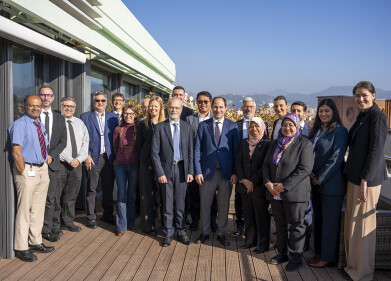Air clean up
Mapping Pollution - What Role Does Google Play?
Jul 20 2017
Internet search engine tycoons Google have undertaken the latest pollution data gathering incentive by equipping their Street View cars with sensitive equipment capable of monitoring nitrous oxides (NOx), nitrogen dioxide (NO2), carbon dioxide (CO2), methane (CH4) and ozone (O3), among other harmful gases.
In addition to capturing photographs and videos of our towns and cities, the cars are now capable of monitoring levels of contaminants and uploading that information to the internet in real-time. Users can then make a decision regarding their transit routes based upon the location of pollution hotspots.
Old idea, new technology
Using air quality sensors to map out pollution is nothing new. Government organisations like NASA have been creating global maps of the world's worst polluters for several years, and even countries with notoriously poor levels of air quality (such as China and India) have been implementing their own monitoring systems in recent years.
On a smaller scale, there has been a notable increase in the number of wearable pollution monitors, which can be carried about by civilians and interact with an app on their Smartphone. In this way, ordinary people can gather information about their city’s air quality levels as they go about their daily business.
The Google technology differs due to its detail. Since Google prides itself on providing a comprehensive overview of pretty much everywhere in the world, it necessarily will visit every corner of a city. That means that the whole urban sprawl can be mapped out, rather than just pockets of activity here and there.
This initial trial took place in Oakland using technology created by environmental company Aclima, but if successful, it could be unrolled across the United States and even further afield.
Google doing its bit
This incentive by Google is just the latest in a string of many efforts to improve air quality and reduce transport-related pollution by allowing its users to see an easily-understandable map of pollution hotspots, giving them ability to tailor their journeys accordingly.
Away from the Street Car solution, Google also has its fingers in a multitude of other environmental pies. Recently, the company announced that it would source all of its energy needs from renewable generators in 2017. It’s already the largest purchaser of renewable energy worldwide, with its 2.6GW of solar and wind power over double that of its nearest competitor (Amazon).
It has even tried its hand at creating its own green innovations, as well. In 2015, they announced plans to create the first airborne wind turbine, capable of powering up to 300 homes. The project is codenamed Makani and takes as its inspiration the principles of kiteboarding, releasing “energy kites” into the air to harness the greater potential found at higher altitudes.
Though Google has not yet named a release date for its Makani kites, the company is confident that it will become a cost-effective and highly efficient method of generating renewable energy.
Events
Feb 05 2025 Nantes, France
Feb 16 2025 Kampala, Uganda
Feb 26 2025 Chennai, India
Feb 26 2025 Tulsa, OK, USA
WATERTECH CHINA (GUANGDONG) 2025
Mar 05 2025 Guangdong, China












